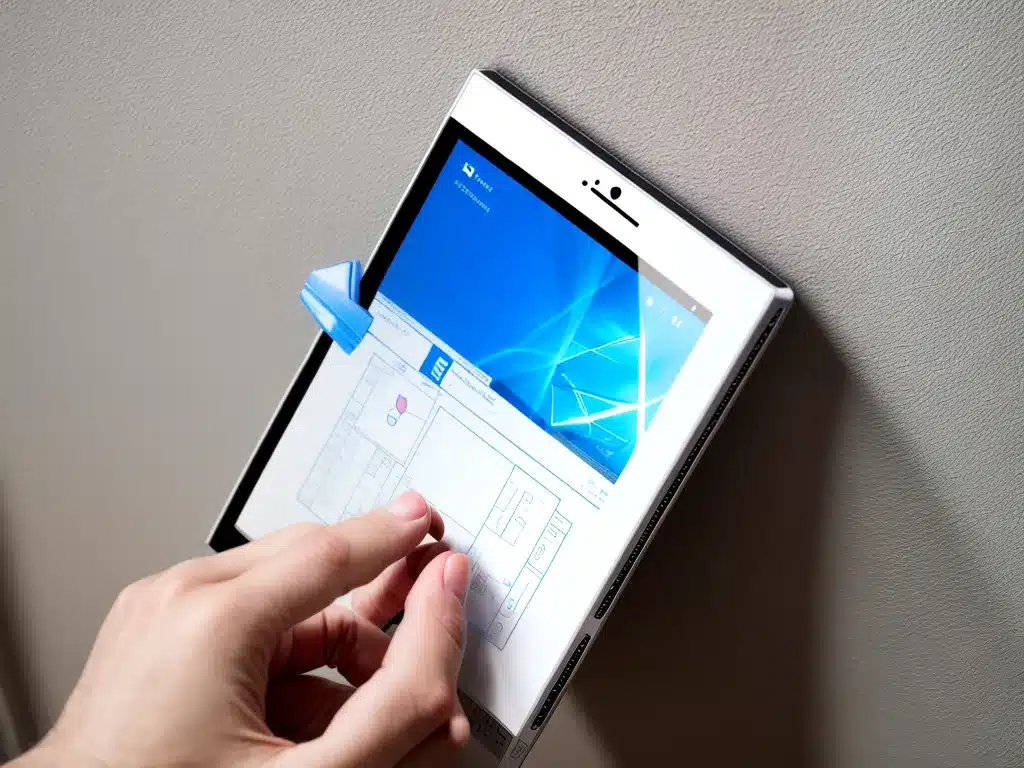Having an unreliable Wi-Fi connection that keeps disconnecting can be incredibly frustrating. As we rely more and more on the internet for work, entertainment, and communication, a spotty wireless connection makes it difficult to get things done.
Fortunately, there are some steps you can take to troubleshoot and resolve Wi-Fi connectivity issues in Windows. Here are the main reasons your Wi-Fi may keep dropping and how to fix them:
1. Outdated or Faulty Network Drivers
Outdated, corrupted, or faulty network adapter drivers are one of the most common culprits behind dropped Wi-Fi connections. Network drivers act as the intermediary between your Windows PC and the wireless router, handling all the software-level communication.
If the drivers are outdated or have bugs, they can cause connection drops. To update your network drivers:
- Open Device Manager in Windows (right-click the Start button and select Device Manager).
- Expand the Network adapters section.
- Right-click your Wi-Fi adapter and select Update driver.
- Search automatically for updated driver software, or browse your PC for the driver file.
- Reboot your computer and test the connection.
Updating or reinstalling the drivers typically resolves any software-related issues that may be interrupting the Wi-Fi signal.
2. Wi-Fi Router Firmware Needs Updating
Outdated router firmware can also lead to wireless connectivity problems. Router manufacturers periodically release firmware updates to fix bugs, improve performance, and add new features.
To update the router firmware:
- Log into your router admin page (192.168.0.1 or 192.168.1.1 typically).
- Check the current firmware version.
- Compare it to the latest version available on the manufacturer website.
- If outdated, download the firmware file and update it through the admin interface.
Firmware updates often optimize Wi-Fi connectivity, so this should help with those random drops.
3. Interference From Other Devices
Interference from other wireless networks, devices, or obstacles in the environment can disrupt Wi-Fi signals. This leads to lost connections, slow speeds, and lag.
Sources of interference include:
- Neighboring Wi-Fi networks on the same channel.
- Bluetooth devices, cordless phones, baby monitors.
- Electrical appliances like microwaves.
- Thick walls, metal, and insulation.
To reduce interference:
- Switch to a less congested channel on the router.
- Move the computer closer to the wireless access point.
- Adjust antenna orientation to optimize signal strength.
- Reduce physical obstacles and radio interference.
This improves signal quality and minimizes choppy, interrupted wireless connectivity.
4. DNS Server Issues
The DNS (Domain Name System) servers translate domain names like google.com to IP addresses. Your ISP assigns DNS servers automatically, which can sometimes fail or have performance problems.
This manifests as frequent “no internet access” errors even when Wi-Fi is still connected.
To change the DNS servers:
- Open Network Connections on Windows.
- Right-click your WiFi network and select Properties.
- Select Internet Protocol Version 4 (TCP/IPv4).
- Click Properties and change the DNS servers to 8.8.8.8 and 8.8.4.4 (Google’s public DNS servers).
Alternatively, you can configure Cloudflare’s fast 1.1.1.1 DNS resolver. Using reliable third-party DNS servers will provide a more stable browsing experience.
5. Wi-Fi Router Placement and Settings
The placement of your wireless router and its configuration options can also impact Wi-Fi reception:
- Position the router centrally – Avoid placing it in corners or far away from computers.
- Adjust antennas properly – Point vertical antennas upwards.
- Set the radio transmit power to 70-100% if lowered previously.
- Select the appropriate network mode like 802.11n/ac for best performance.
- Use a Wi-Fi analyzer to pick the best channel for least congestion.
Tweaking these settings based on your environment will extend Wi-Fi range and keep connections more stable.
6. Problems With Specific Windows Versions
Certain Windows versions are more prone to wireless networking problems:
- Windows Vista has notoriously buggy Wi-Fi drivers. Upgrading to newer hardware/OS may be necessary.
- Windows 8/8.1 have connectivity issues after being idle which requires a driver update.
- Windows 10 versions before 1607 have wireless bugs fixed in later updates.
Fully updating the operating system can mitigate version-specific Wi-Fi headaches.
7. Check for Malware, Viruses, and Conflicts
Finally, malware and viruses can sometimes adversely interact with network adapters and cause connection problems.
Scan your computer with reliable antivirus software to check for infections. Additionally, conflicting applications can interrupt the Wi-Fi – try selectively closing programs to isolate any culprits.
Restarting routers/access points and the computer ultimately helps clear any software-related problems.
By methodically going through the above troubleshooting steps, you should be able to resolve those frustrating, intermittent Wi-Fi dropouts in Windows. Analyze the environment and hardware, reduce interference, update software drivers/firmware, and change router settings as needed. This will get your wireless network connecting reliably again.













